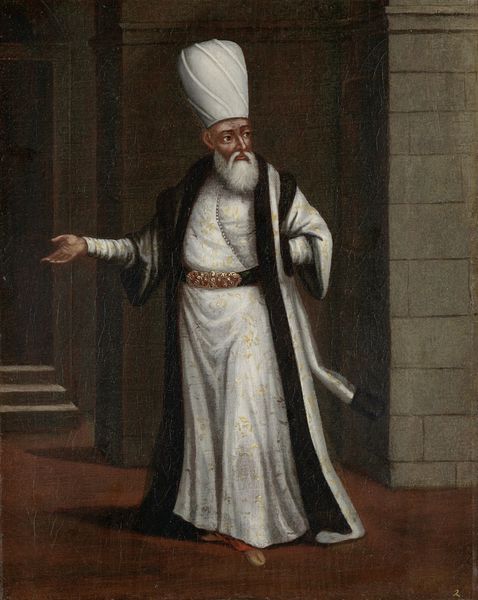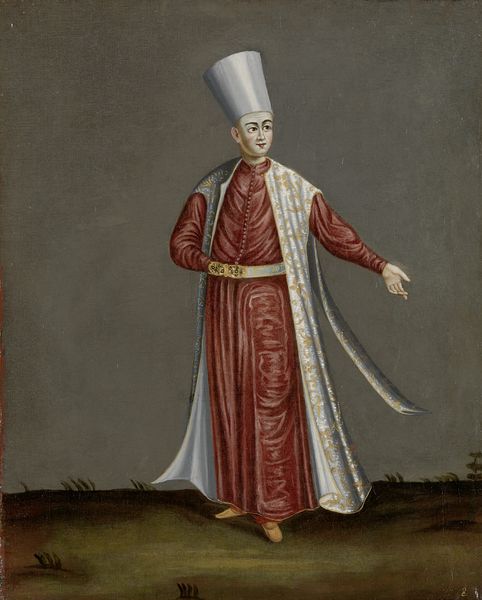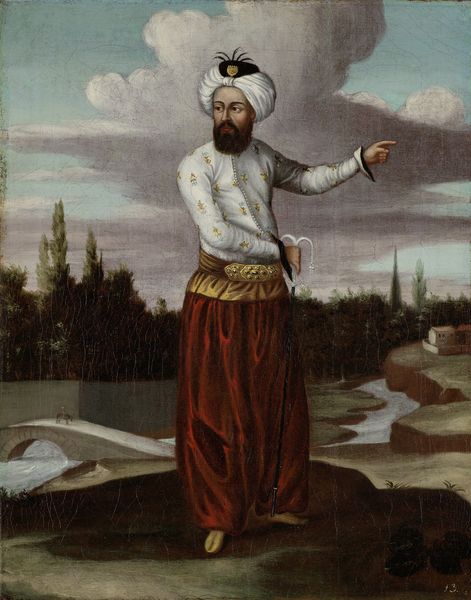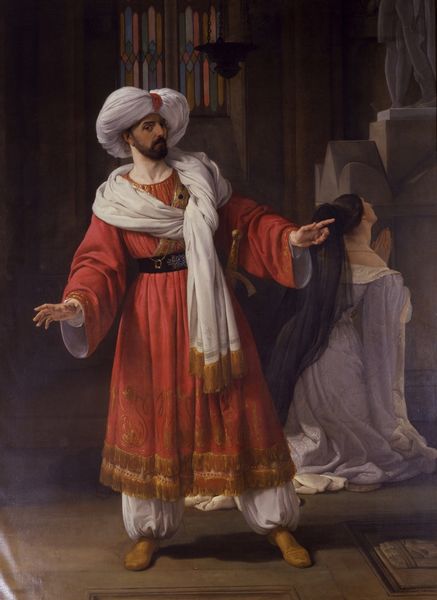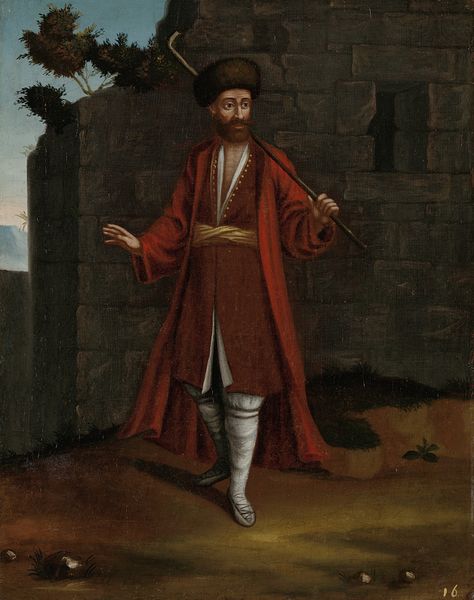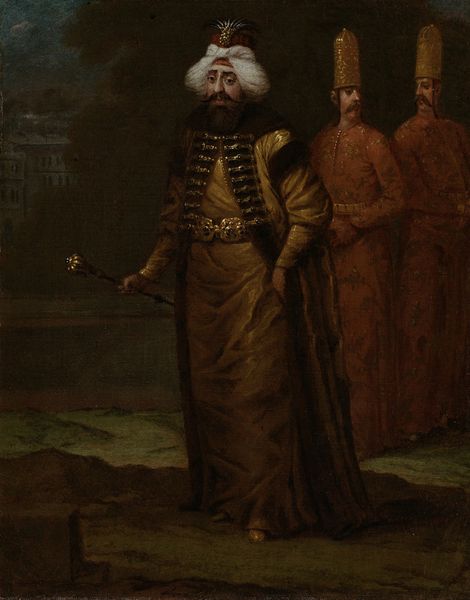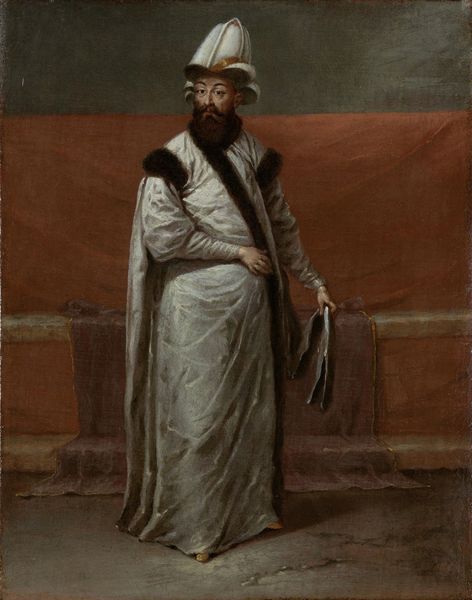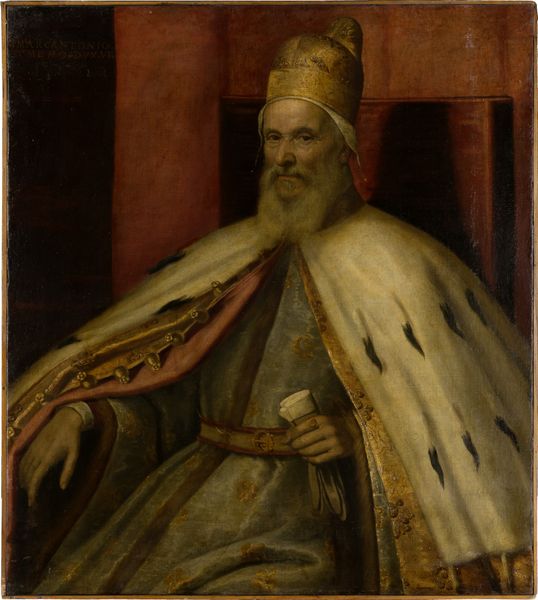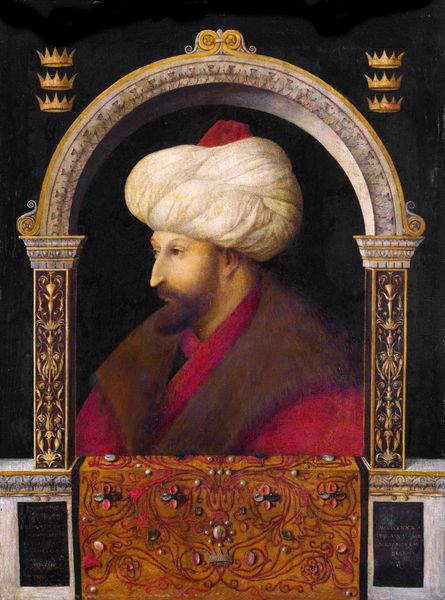
painting, oil-paint
#
baroque
#
painting
#
oil-paint
#
oil painting
#
orientalism
#
genre-painting
#
history-painting
Dimensions: height 39 cm, width 31 cm
Copyright: Rijks Museum: Open Domain
Editor: So, here we have "The Capoudgi Bachi, Grand-master of the Seraglio" by Jean Baptiste Vanmour, painted sometime between 1700 and 1737, using oil. The detail in the clothing and the austere expression of the figure give it a feeling of formal authority. What strikes you about this work? Curator: What I find compelling is how the material reality of Ottoman court life is presented to a European audience through the very application of oil paint. The smooth, almost porcelain-like finish aimed to simulate the luxurious textiles and precious metals adorning this high-ranking official. Consider, the pigments themselves were traded goods, commodities reflecting a burgeoning global exchange. How does the use of these materials change your reading? Editor: It's interesting to think of the paint itself as a form of cultural currency, reflecting that East-West trade dynamic. I suppose I initially just saw a portrait, but now I’m thinking about how the materials used to create it reinforce the painting's subject matter and the exoticism associated with the East in European eyes. Do you think the artist was trying to highlight or critique that "Orientalist" gaze? Curator: Perhaps both. Vanmour served as a court painter in Istanbul, meticulously documenting court rituals and officials. It's less a personal interpretation, and more an exercise in detailed representation catering to European tastes. The value here lies in the meticulous rendering of surfaces and textures – the silks, the furs, the glint of metal. These tangible things become the primary vehicle for understanding another culture, reduced to objects of display and consumption. Does thinking of it that way complicate your view of the work? Editor: Definitely. It feels less like a window into a different world and more like a catalogue of material possessions, seen through a very specific lens dictated by European collecting habits. Thank you, I'm never going to look at an "Orientalist" painting the same way. Curator: Precisely, seeing art through its materials can expose those layers of economic and social forces that often stay hidden behind a beautiful surface.
Comments
No comments
Be the first to comment and join the conversation on the ultimate creative platform.
